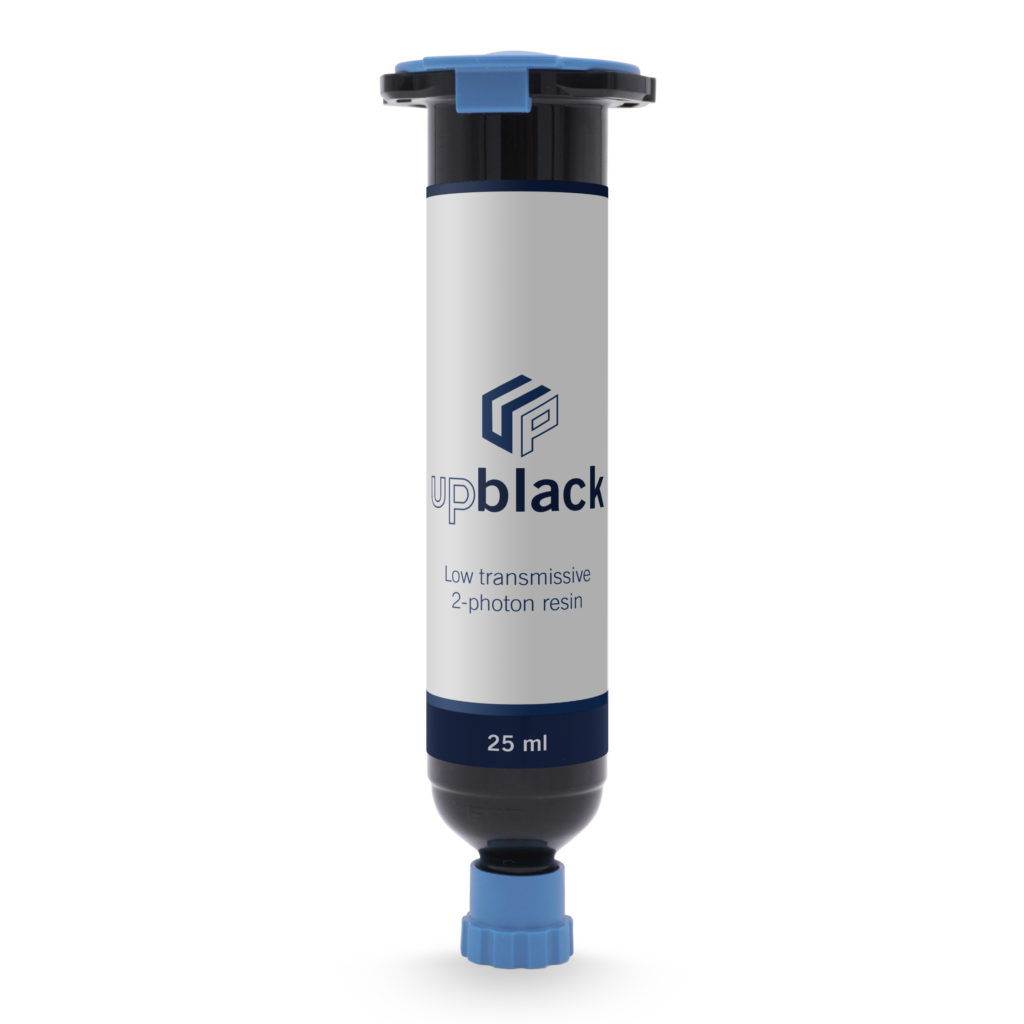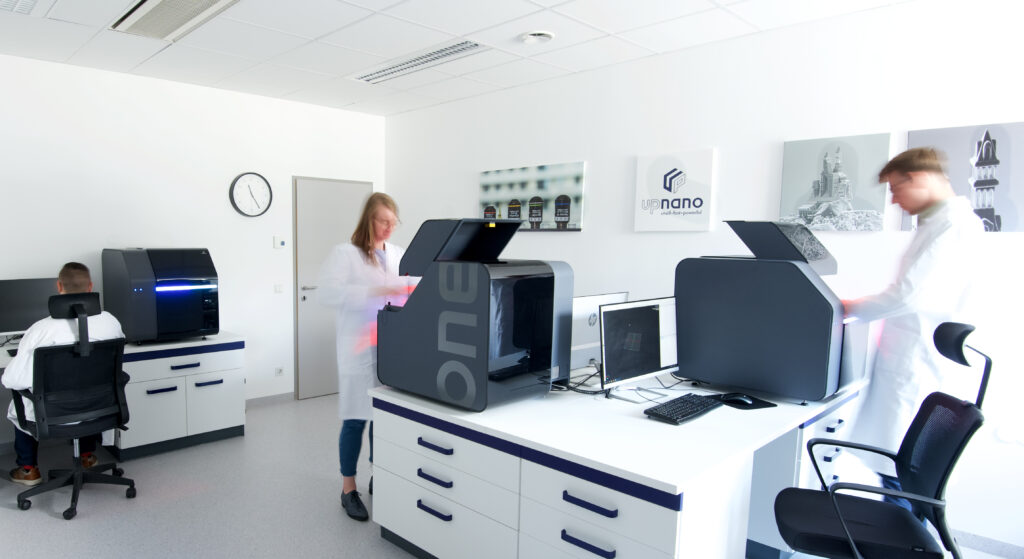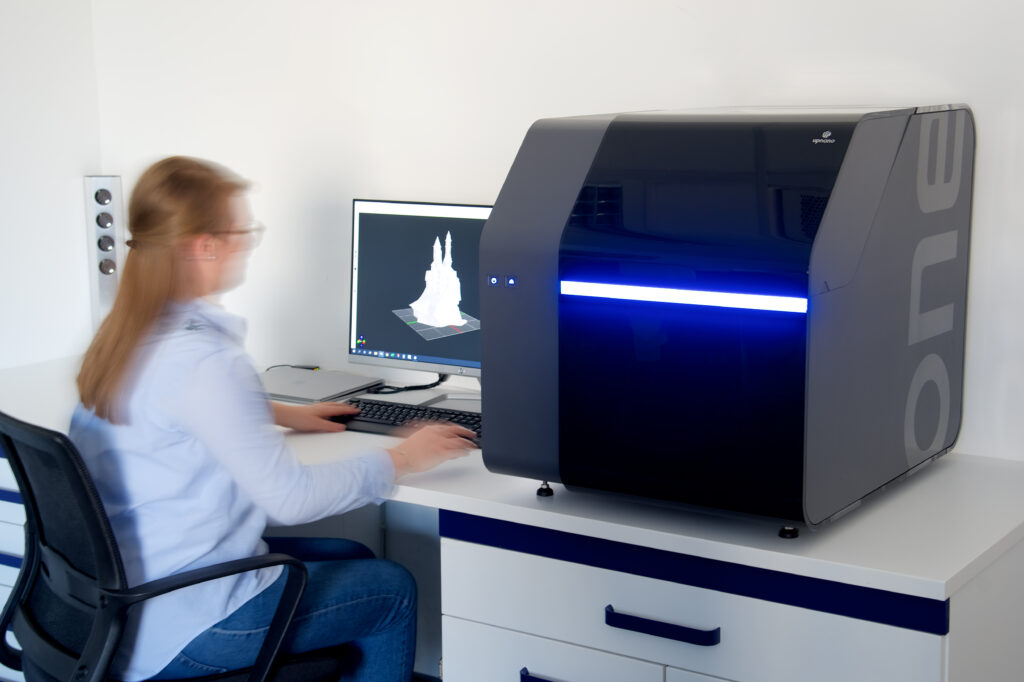Novel Material Allows 2PP 3D Printing of Non-Transmissive (Black) Structures
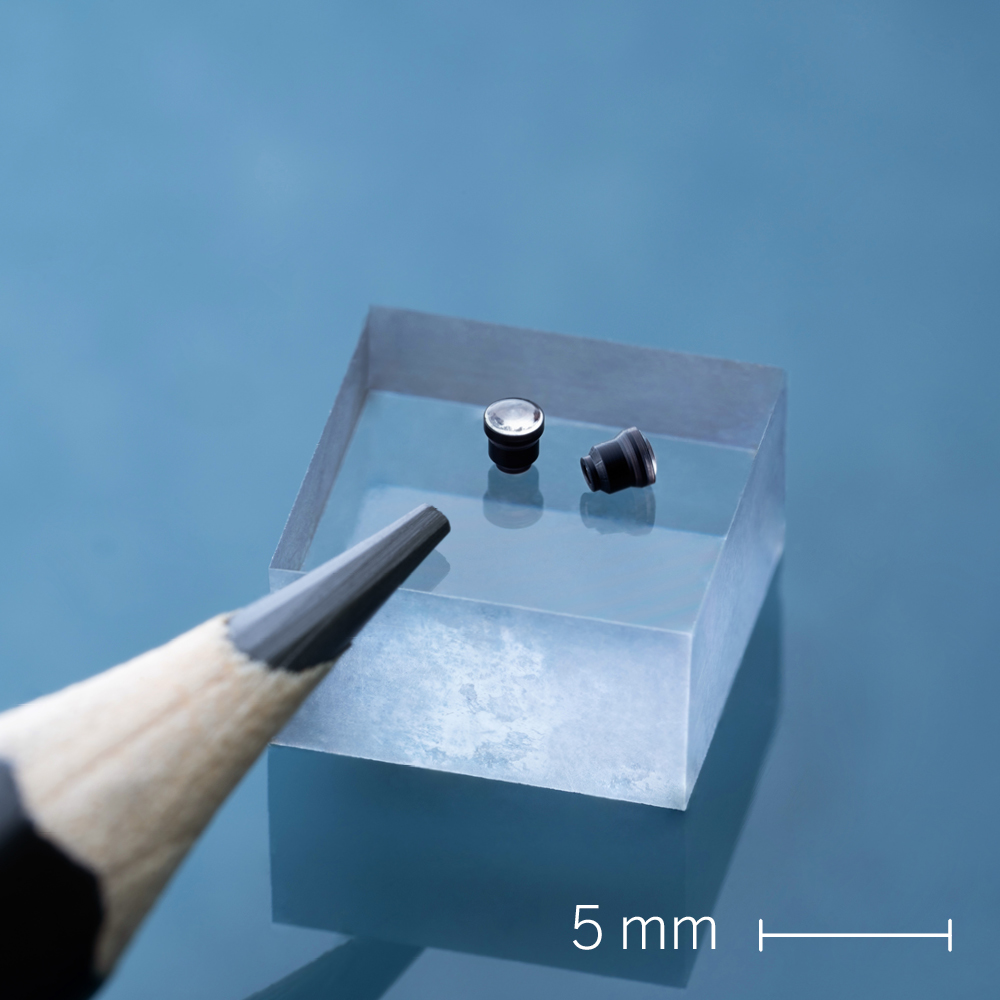
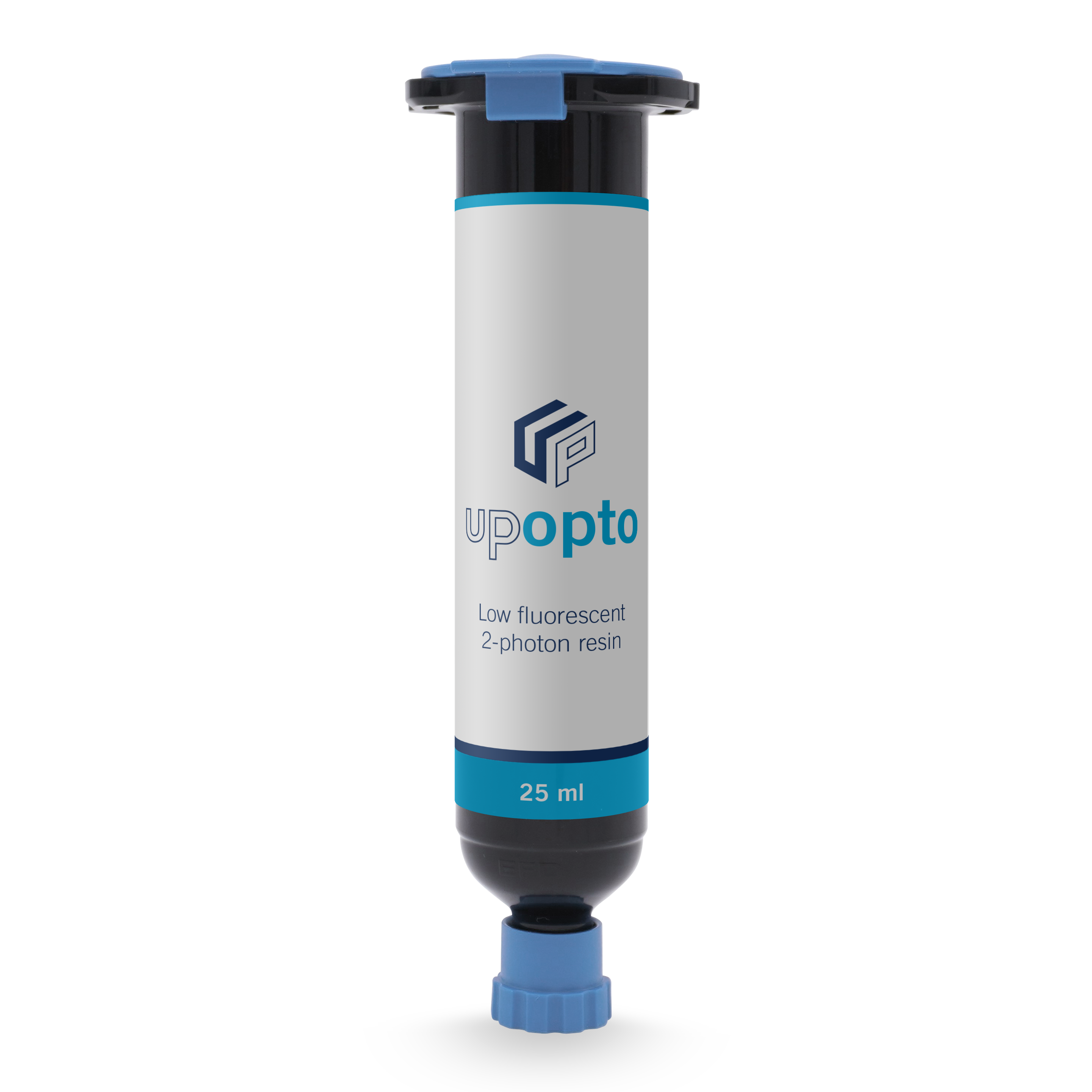
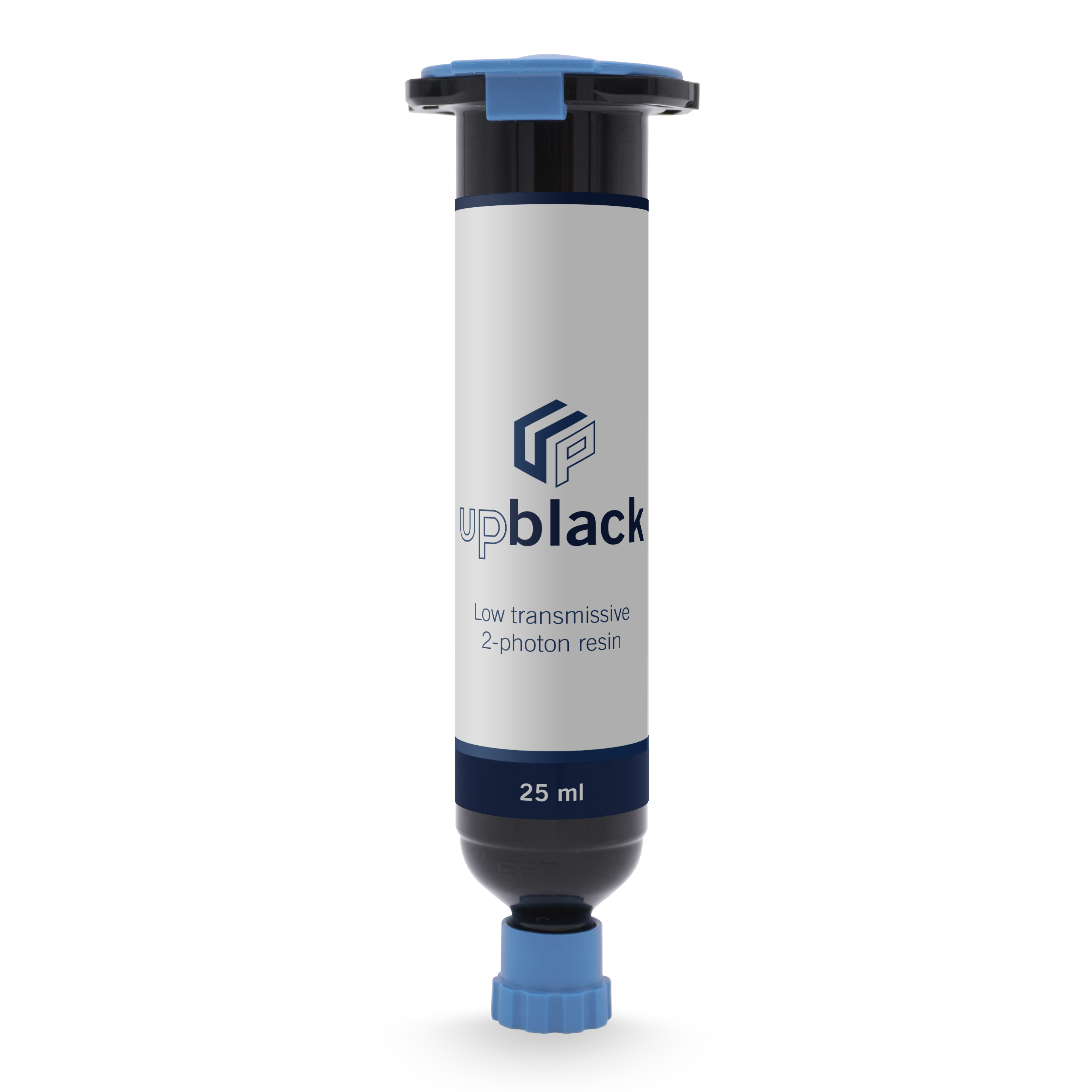
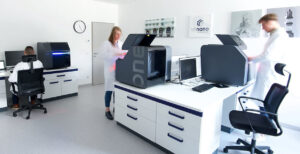
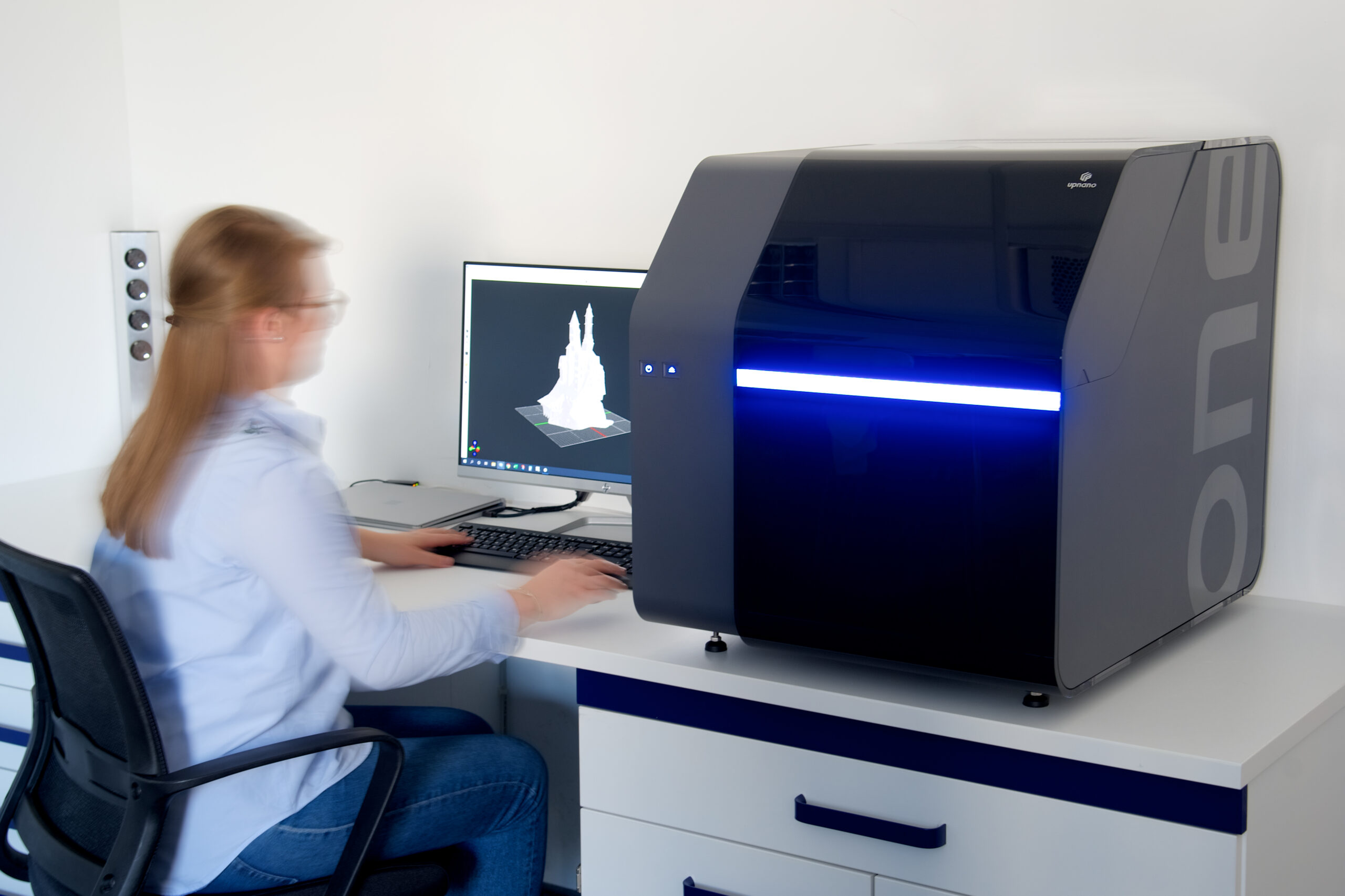

Powerful laser by UpNano polymerizes innovative black material. Combined with new translucent material, 3D printing of entire optical systems possible
Vienna, Austria, 12 October 2021 – Highly precise 3D structures in black can now be printed using a 2-photon polymerization (2PP) 3D printing process. This seemed for a long time impossible as non-transmissive (black) materials greatly reduce the polymerization efficiency of the printing process. Now the 2PP specialist UpNano GmbH (Vienna, Austria) succeeded in developing such material benefiting from the exceptional high laser power of its NanoOne printer range. The aptly named material UpBlack can be easily combined with the recently developed optical translucent material UpOpto – making the 2PP-3D printing of entire optical systems (lenses and holders) with one printing system possible.
It sounds like a contradiction in terms: photopolymerization of a non-transmissive material. But that it can be done has now been demonstrated by UpNano, the manufacturer of the renown NanoOne range of laser-powered 2-photon 3D printers that are able to build structures across twelve orders of magnitude. The “secret” to the company’s success is NanoOne’s laser power of up to 1 Watt, which is several times more than in comparable systems. Despite the high light absorption of UpBlack this laser is strong enough to deliver sufficient energy for polymerization of the liquid photopolymer material during manufacturing and for polymerization to happen.
Optimal for Optics
UpBlack is ideally suited for printing of optical systems. They often require non-transmissive holding structures for lenses or other translucent optical parts. These can now be printed at high resolution with UpNano’s NanoOne 3D printing systems. “Complementary, we also have an optical transparent material in our commercially available material range”, adds Bernhard Küenburg, CEO of UpNano. “Called UpOpto, this material benefits from exhibiting very low fluorescence, which often interferes with many optical, biological and medical applications.” In fact, UpOpto shows a high biocompatibility and its non-cytotoxicity has been certified according to EN ISO 10993-5:2009, which is important for customers working with microfluidics. “Using UpBlack and UpOpto in combination”, emphasizes Bernhard Küenburg, “our customers can print an entire optical system with just one printer.” Already several customers of UpNano, including a large Asian technology conglomerate, took advantage of this innovation.
But the high laser power of the NanoOne printers is not the only characteristic that distinguishes them from comparable systems. They also use an optimized optical pathway, a patented adaptive resolution technology and smart algorithms for laser scanning. Taken together this allows high-resolution 3D printing across twelve orders of magnitude – within times never achieved previously.
Quality Qualifications
Recently the company also was awarded the coveted ISO 9001 norm that is based on a number of quality management principles including a strong customer focus, the motivation and implication of top management, the process approach and continuous improvement. Bernhard Küenburg, explains the company’s motivation for applying for this norm: “During the last two years our sales of 3D printers and materials grew strongly. At the same time, we heavily invested in the company’s expansion. This growth of UpNano has to be accompanied by a strong focus on quality management, and the ISO 9001 certification testifies that we were able to achieve that.” Also, the company received an ISO 14001 certification confirming their introduction of an effective environmental management system.
The growth of UpNano is driven by a strong focus on R&D and innovation. Its patented adaptive resolution technology allows printing of centimeter large objects with a micrometer resolution in short production cycles. Only recently the company also introduced the NanoOne Bio and co-developed X Hydrobio INX© U200, the only commercially available two-photon hydrogel material that allows embedding living cells straight from a culture plate within highly precise 3D-printed structures for biological applications. Orders from both, industry and academia made a rapid expansion of the company necessary. The number of personnel doubled with new staff recruited for the Engineering and Software Development Departments as well as for project management within one year. Also, the floor space of their premises at the Vienna headquarter doubled, and in order to better serve the strong US market the company now employs a sales representative on the east coast.
Downloads
Please click image to show high-resolution file.


